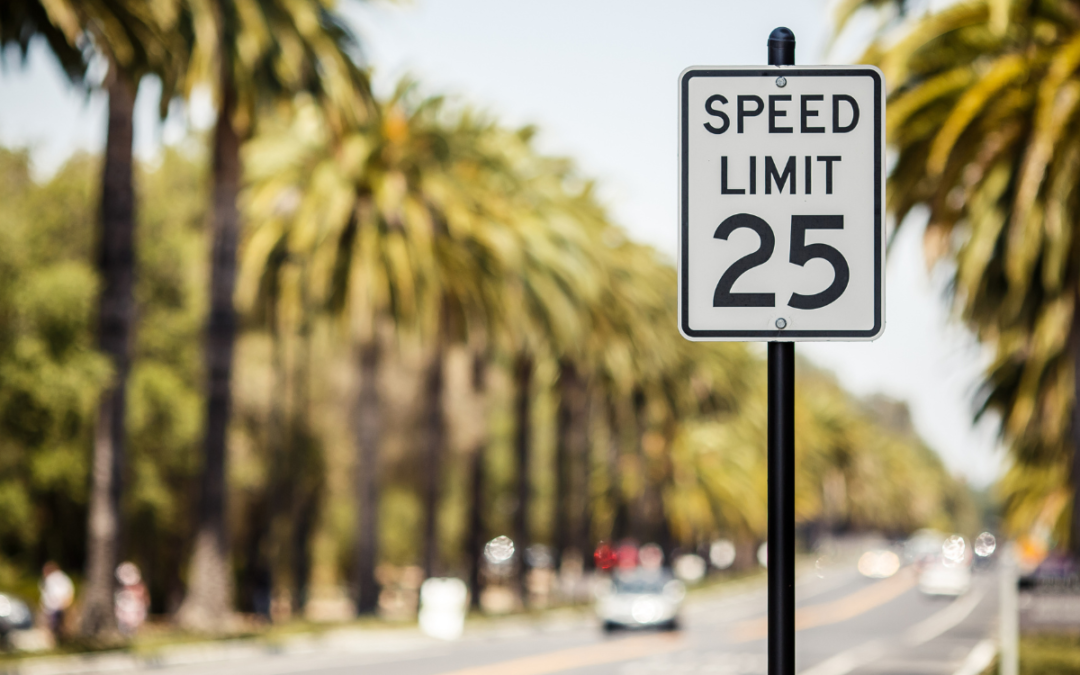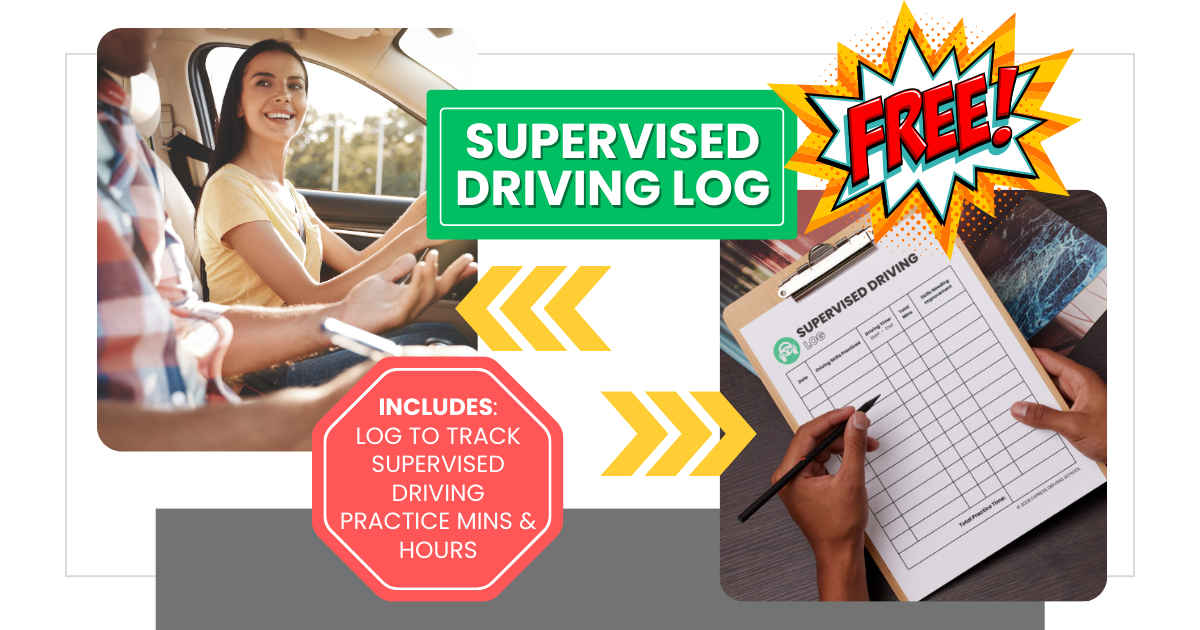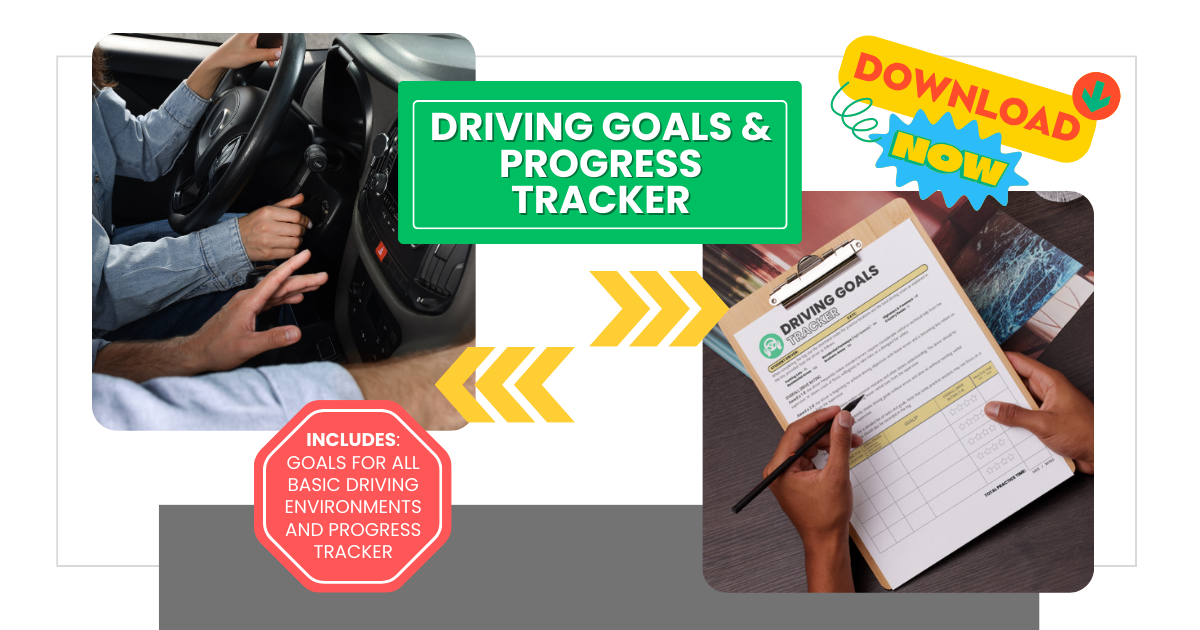Speed Management | RESIDENTIAL AREAS
| Driving Lessons |
Navigating residential areas as a new driver can be a daunting experience, especially when it comes to managing your speed effectively. Speed management is crucial not only for the safety of residents and pedestrians but also for the driver’s safety. Here’s a step-by-step guide to practice maintaining a safe and consistent speed, focusing on residential areas where the speed limit is usually around 25 mph.
Goal for Speed Management RESIDENTIAL AREAS
The goal is to help new drivers manage and control speed with proper use of the gas and brake pedals.
The Learning Environment
Look for a quiet residential neighborhood with very little traffic and few parked cars, pedestrians, lane markings, and intersections. Schedule practice during the day with dry pavement and no adverse weather.
Materials Needed
The Supervised Driving Log (Optional): Although it was originally created for California Teens Learning to Drive, this FREE and COMPLEMENTARY driving log is an essential tool for all new drivers. Keeping a driving log is great for tracking how you’re doing, finding what you need to get better at, and feeling good about your wins. It helps you learn in an organized way, focusing on key skills to make you a better driver faster. This careful tracking builds confidence and speeds up your path to driving well.
Understanding Speed and Speed Laws
Before you begin practicing speed management in residential area review speed control and speed laws. Basic speed laws are essential elements of road safety, designed to regulate the speed of vehicles to prevent accidents and ensure the smooth flow of traffic. Understanding these laws is crucial for all drivers.
Activity Steps for Speed Management RESIDENTIAL AREAS
STEP 1: Gradually Accelerate Up to the Speed Limit
The first step in mastering speed management is to gradually accelerate until you reach the speed limit, which is typically 25 mph in residential areas. It’s important to only occasionally glance at the speedometer during this process. This helps in developing a sense of speed without becoming overly reliant on the speedometer.
STEP 2: Maintain a Consistent Speed
Once you’ve reached the speed limit, the next challenge is to keep the car moving at this pace. This requires a delicate balance of monitoring your speed without constantly staring at the speedometer. It’s about feeling the car’s speed and responding to it intuitively.
STEP 3: Develop the Sense of 25mph
Understanding how 25 mph feels is crucial for maintaining this speed without constantly checking the speedometer. This step is about developing a sensory perception of speed, where you can gauge how fast you’re going based on the sound of the engine, the visual passing of surroundings, and the feel of the car.
STEP 4: Avoid Speed Fluctuations
The key to effective speed management is not allowing your car to speed up or slow down from the 25 mph pace. This is easier said than done, especially in residential areas where various factors can affect your speed, like hills and curves. The goal is to maintain a steady pace, making minor adjustments as needed without significant speed variations.
STEP 5: Minor Speed Adjustments
For minor speed adjustments, the use of the gas pedal is essential. Gently pressing or releasing the gas pedal can help you maintain your desired speed. However, when traveling downhill, brakes become crucial for speed control. The gravity-induced acceleration can quickly increase your speed, making it necessary to apply the brakes gently to stay within the speed limit.
Common Errors to Avoid
- Speed Fluctuation: New drivers often find their speed fluctuating, especially when navigating hills. It’s important to anticipate these changes and adjust accordingly.
- Speedometer Fixation: Fixating on the speedometer is a common error. It’s crucial to glance at it occasionally but not stare at it continuously. This helps in developing a better sense of speed.
Signs the Learner Gets It
The ultimate sign that a new driver has mastered speed management is maintaining an appropriate and steady speed through residential areas. This shows that the driver has developed a good sense of speed and can make minor adjustments as needed without relying heavily on the speedometer.
Use a progress tracker to keep track of skills that have been mastered and those that still need practice or improvement. Express Driving School proudly offers a Driving Skills and Goals Progress Tracker to help student drivers and their driving coaches with assessments and evaluations by providing a rating scale that is simple and easy to use.
Speed Management | RESIDENTIAL AREAS
Mastering speed management in residential areas is a critical skill for new drivers. By following these steps, new drivers can learn to control their speed effectively, ensuring the safety of themselves and those around them. Practice is key, and with time, maintaining a consistent speed will become a second nature. Remember, safe driving is not just about following rules; it’s about developing an intuitive feel for the road and your vehicle.
Drive with Confidence!
Keep up with all the latest driving news. Expolre our blog packed with essential tips and expert advice on all things related to DRIVING!






